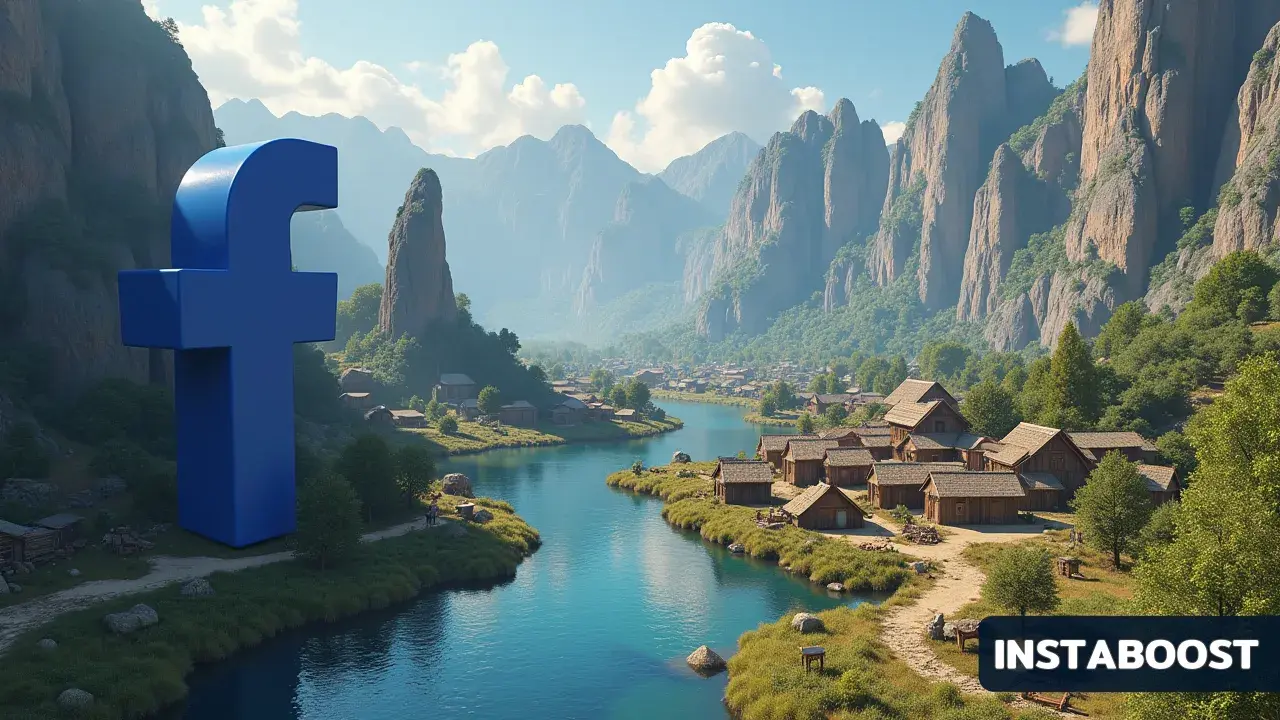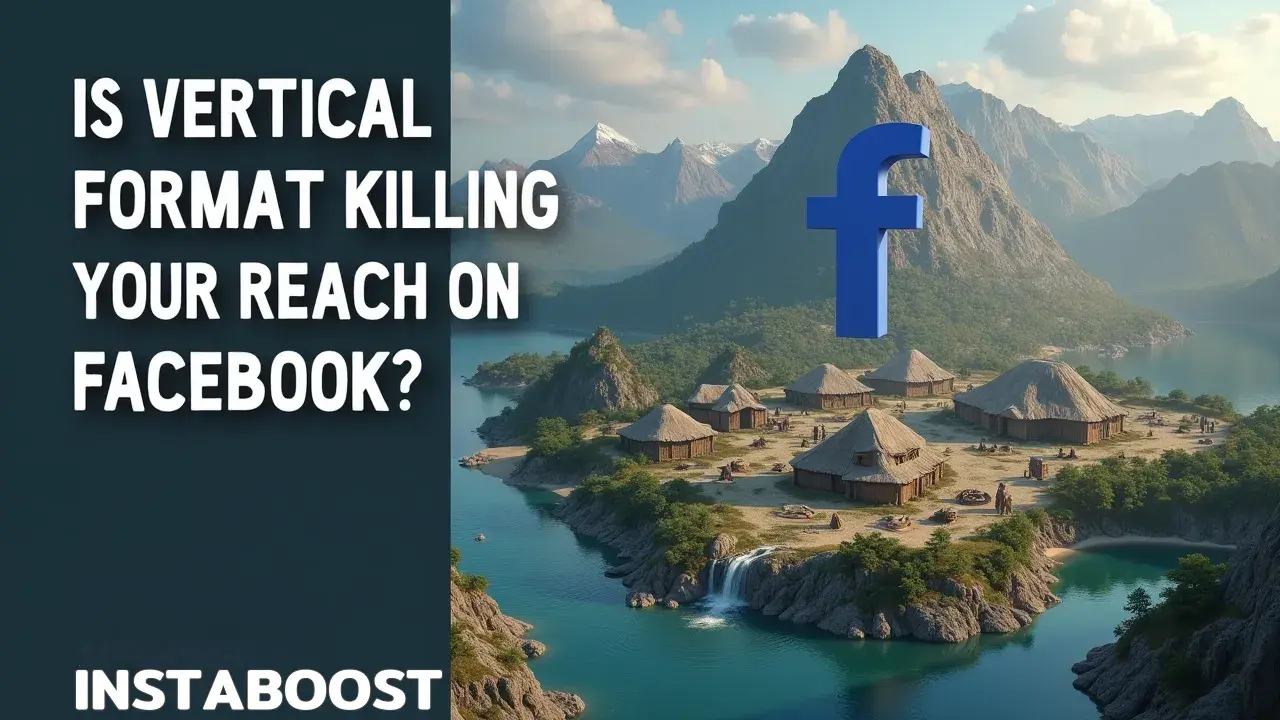Is Vertical Format Killing Your Reach on Facebook?
Vertical video can perform well on Facebook when aligned with current viewing behaviors. Recent insights point to aspect ratios that prioritize mobile feeds, where vertical and square formats often drive strong engagement if framing, captions, and hook timing match the format. Results vary by audience, placement, and content type, so testing 9:16 against 1:1 and 16:9 helps validate fit. The smart path is to iterate on aspect ratio while tracking watch time and interactions.
The Format Dilemma: Is Vertical Video Truly Your Best Bet?
A lot of people say you need to post vertical videos for social media, and for TikTok or Instagram, that usually works out. But Facebook isn’t quite the same. If you’ve tried sharing Reels there and they haven’t picked up much attention, you might start to wonder if the vertical format is actually to blame. It’s tempting to think the algorithm is working against you, but the situation’s a little messier than that.
Facebook’s users are split between desktop and mobile, and the way they watch videos isn’t always straightforward. On phones, vertical videos fill the screen and feel natural, but anyone scrolling on a computer might see your video looking awkward or even cut off. That kind of thing can chip away at your engagement, even if you don’t notice it right away.
Some creators, especially those running ads or using tools like INSTABOOST, have started testing out square or landscape formats just to see if the numbers shift. The thing is, Facebook mostly wants people to watch and respond, and if your video doesn’t quite match how people are actually using the site, it’s easy for even your strongest ideas to get lost.
Some creators, especially those running ads or using tools like INSTABOOST, have started testing out square or landscape formats just to see if the numbers shift. The thing is, Facebook mostly wants people to watch and respond, and if your video doesn’t quite match how people are actually using the site, it’s easy for even your strongest ideas to get lost.
I’ve even seen people spend a lot of time trying to increase your presence with Facebook, only to realize later that format played a bigger part than they expected. So it might be worth pausing before defaulting to vertical for everything. It ends up being a question of where most people are watching you and whether the format you’re used to is actually helping, or quietly getting in the way. More people are starting to wonder about that now, and as more try different formats, the results seem to keep changing.

Why Facebook’s Algorithm Isn’t Obvious About Format
It’s not surprising you don’t see the best Facebook strategies getting shared around much. How posts actually get seen there is tangled up in what people engage with, what sort of signals your posts give off, and whatever Facebook’s paying attention to this month. You see vertical videos all over TikTok or Instagram, but Facebook is its own thing – the people using it are usually older, and their habits are different.
And Facebook doesn’t exactly spell out what it wants, either. Their algorithm looks at everything – from how long someone watches a video, to whether they share or comment, to what’s in the first few seconds – but the real rules are kept quiet. So, if you try to just copy what’s blowing up somewhere else, like switching to all vertical videos, you might actually see fewer people watching, especially if your audience seems to like horizontal or square. A lot of the most successful Facebook videos don’t actually follow those big trends; you’ll notice they often stick with wider shots, move at a slower pace, or tell stories in a way that fits into how people use Facebook.
When Facebook offers tips, they rarely start with video format; instead, it’s about whether your posts get people to respond, or whether they feel like they fit in naturally. Sometimes you notice that the groups with the liveliest comment sections or the most consistent reach have also managed to attract more group followers, though it’s rarely through flashy tactics. If you’re only chasing what works on other platforms, it’s easy to lose sight of what your own audience wants. On Facebook, the people who do well are usually the ones who test things out, focus on real conversations, and pay attention to what their own followers react to, instead of just chasing the latest algorithm rumor. It’s a slower process, but it’s what tends to work, whether you’re on your own or working with a team like INSTABOOST.
Rethinking Your Content: Prioritizing Consistency Over Quick Wins
It helps to think of this less like chasing a finish line and more like looking after something that grows slowly over time. There’s a lot of talk about switching everything to vertical video because it feels like that’s what everyone’s doing now, but on Facebook, that kind of quick reaction rarely pays off for long. What seems to matter more is being steady – posting regularly, watching how people actually interact with what you share, and making small, thoughtful changes.
If you notice your followers respond better to horizontal or square videos, there’s no reason to force a switch to vertical just because it’s getting attention elsewhere. The format isn’t nearly as important as keeping up with your posting schedule and putting effort into what you’re sharing. Things like replying to comments, testing a few different thumbnails, or changing the way you write your captions – simple things that show you’re paying attention – tend to make a bigger difference than chasing every trend or looking for shortcuts like buy Facebook likes for your posts. On Facebook, people scroll differently than they do on TikTok or Instagram, so your own numbers matter more than whatever’s trending.
Taking a close look at which posts people are sharing or actually watching all the way through gives you more useful feedback than following every new fad. If you’re looking for a way to build something that lasts, the INSTABOOST method is less about big leaps and more about trying things out, seeing what happens, and slowly adjusting, so your page feels alive in a way the algorithm can pick up on over time.
Why Blaming Vertical Format Might Miss the Real Problem
It’s tough when you’ve tried every trick you can find to get more Facebook reach and nothing seems to change. You switch your videos to vertical because everyone online says that’s the key, but the numbers stay mostly the same. It’s easy to blame the format, especially since TikTok and Instagram are all about vertical video now.
But Facebook works differently, and its algorithm pays attention to things most people don’t talk about – things like whether people watch all the way through, who’s leaving comments, or how quickly someone scrolls past. And if the people you’re reaching are mostly on a computer, going vertical probably isn’t going to make a difference if the video itself doesn’t connect with them. Facebook’s audience tends to be older and a bit more set in their habits, expecting a certain look and feel when they scroll. I’ve even seen people experiment with things like promote videos with Facebook views, but the real shift usually happens when you stop worrying so much about whether your video is the right shape and start focusing on what actually holds your audience’s attention or gets them talking. That’s usually when things start to move. The people who really grow on Facebook aren’t the ones who only think about vertical versus horizontal – they try things out, watch what actually gets a response, and adjust along the way. If your reach is stuck, it’s almost never just because of the video format.
Settling Into the Real Work: Craft for the Long Game
Take a second to really think about this. If you’re concerned that posting in vertical format might be holding back your reach on Facebook, it’s worth stepping back for a broader look. Facebook, and other platforms like it, aren’t just about chasing whatever style happens to be trending. What actually matters is knowing your audience – figuring out what they care about, showing up often, and shaping your work around what you learn from them. There’s always chatter about the “right” format or the latest trick with Reels, but when you pay attention to people who’ve built something solid, it’s clear that most of them didn’t get there by tweaking video orientation alone.
They paid attention, tried new things, listened to real feedback, and kept adjusting along the way. Sure, maybe vertical videos catch people’s eyes for now, but if what you’re sharing doesn’t actually connect, the format isn’t going to fix that. Sometimes it’s small things – a better caption, a different schedule, or just noticing when you expand your visibility with shares – that make the difference. Platforms are always changing; algorithms shift, new features come and go. The people who keep growing are usually the ones who keep learning and refining their work, even when those trends start to fade.
If you’re aiming for steady growth on Facebook, the most practical thing you can do is keep making thoughtful work and show up consistently. That’s what INSTABOOST is really about – the work itself, the care you put into it, and the way you keep checking in with your audience to see what’s landing. There isn’t really a shortcut for that, and there probably never will be.















